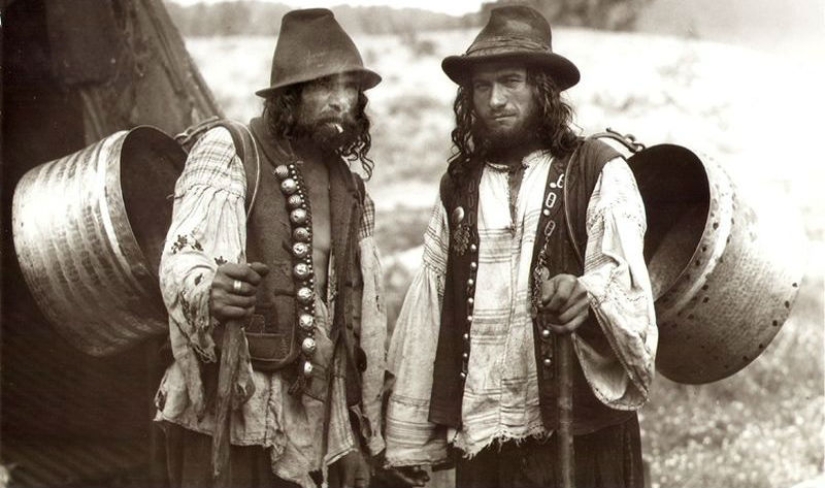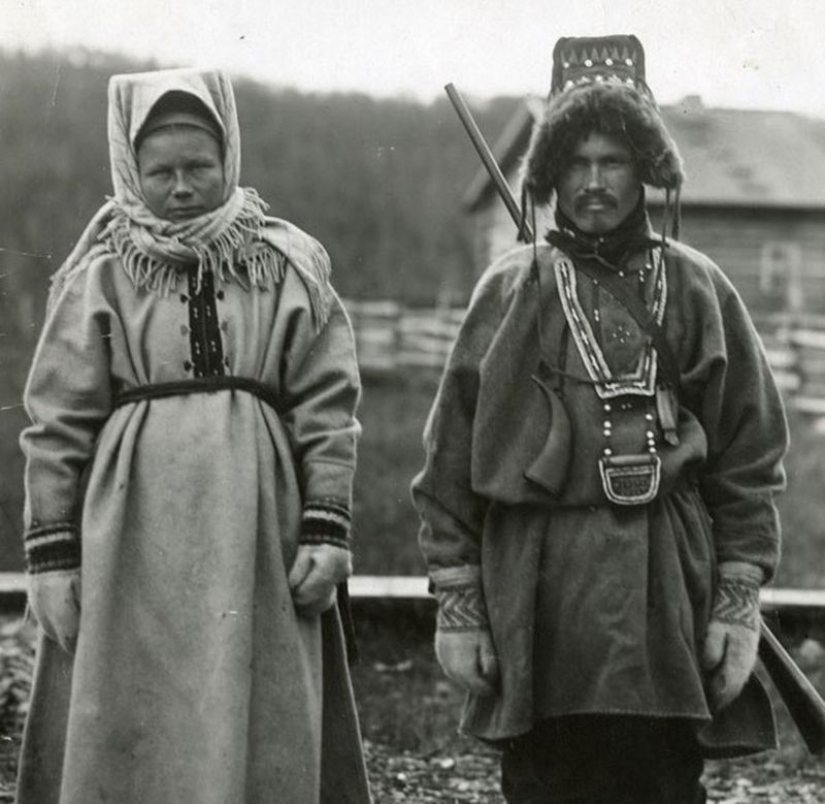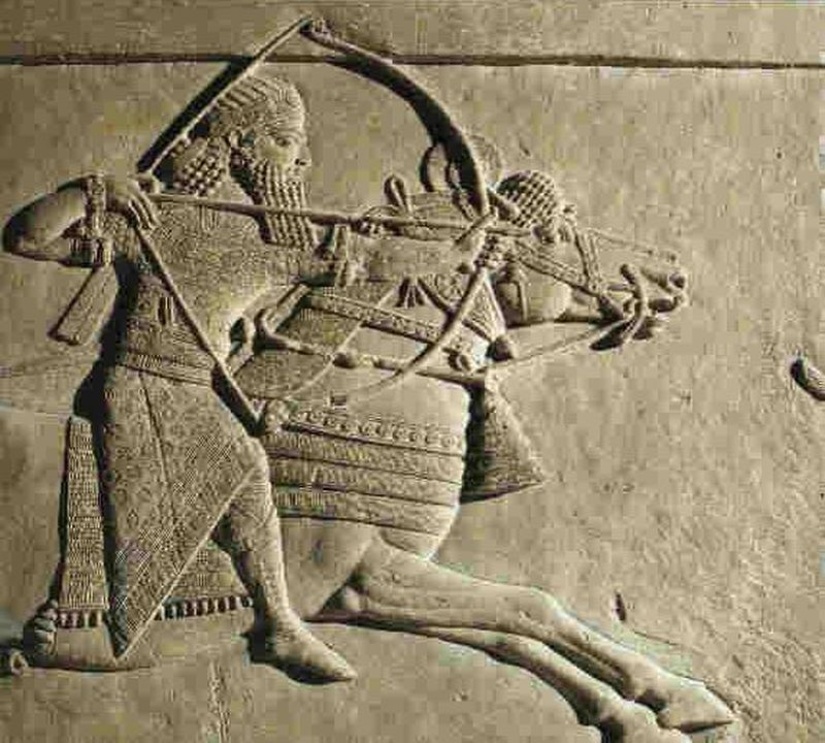20 of the most mysterious peoples of the world
Despite the efforts of historians and ethnographers, the history of these peoples still keeps its mysteries.


1. Russian
Yes, Russian is one of the most mysterious peoples. Scientists still can not come to a common opinion or about when the Russians were "Russian", nor about where, in fact, the word is derived. Controversial is the question of the origin of the people. In Russian ancestors were recorded and Normans, and Scythians, and Sarmatians, and wends, and even South Siberian people of the wusun.

2. Maya
We do not know the origin of the Mayan people, no matter where he went. Some scientists erected the roots of the Maya to the legendary Atlantis, while others believe that their ancestors were the Egyptians. The Maya created an effective system of agriculture, had a profound knowledge in the field of astronomy. The calendar of the Maya developed, and the peoples of Central America. They used a hieroglyphic system of writing, partly deciphered. Mayanskaya civilization was very advanced, but by the time of arrival of the conquistadors was in a deep decline, and the Maya themselves vanished in history.

3. The Lapps
Lapp, also referred to as Sami and Saami. The age of this ethnic group has at least 5,000 years. Scientists are still arguing about who the Lapps and where they came from. Some believe the people of the Mongoloid, others argue that the Lapps — paleosurface. The language of the Sami people belong to the Finno-Ugric languages, but the Laplanders 10 sámi dialects, which are so different from each other, which can be called independent. It even makes it difficult to communicate one with the other Lapps.

4. Prussia
The origin of the name Prussia is shrouded in mystery. The first time it is found only in the IX century in the form of Brusi in the draft anonymous merchant, and later in the Polish and German Chronicles. Linguists find analogies in many Indo-European languages and I think it goes back to the Sanskrit purusa — "man". Not well preserved enough information about the language of the Prussians. The latest media died in 1677, and the plague of 1709-1711 years destroyed the last of the Prussians in Prussia. Already in the XVII century, instead of Prussian history begins with the history of "prosatexte" and the Kingdom of Prussia, the local population which had little in common with the name of the Baltic Prussians.

5. Cossacks
The question of where did the Cossacks, still remains unresolved. Find their homeland in the North Caucasus and the sea of Azov, and Western Turkestan. The pedigree of the Cossacks erected to the Scythians, to the Alans, Circassians, to the Khazars, to Goths, to the brodnikov. Supporters of all versions have their arguments. Today, the Cossacks — a multi-ethnic community, but they like to insist that the Cossacks — a separate nation.

6. Parsa
Parsa — confessional group of followers of Zoroastrianism in South Asia, with Iranian origin. The population is now less than 130 thousand people. Parsis have their own temples and the so-called "towers of silence", where, in order not to defile the sacred elements (earth, fire, water), bury the dead (corpses eat the vultures). The Parsee is often compared with the Jews, they also were forced to leave their homeland and meticulous in matters of compliance with cults. "The Iranian League" in India the beginning of the XX century promoted the return of the Parsi home, reminiscent of Zionism Jews.

7. Hutsuls
The meaning of the word "Hutsul" is still under debate. Some scientists believe that the etymology of the word goes back to the Moldovan "gots" or "guts," which means "robber", the other — to the word "kocul", which means "shepherd". Hutsul is also called the "Ukrainian highlanders." Among them is still a strong tradition of quackery. Hutsul sorcerers called molfar. They can be black and white. Molfar unquestioned authority.

8. The Hittites
Hittite power was one of the most powerful forces on the geopolitical map of the Ancient world. Here appeared first Constitution, the first Hittites used chariots and revered the eagle, but the information about the Hittites still fragmentary. In their "tables of the courageous acts of" kings a lot of marks "next year", but the year of the report is unknown. The chronology of the Hittite Empire we know from the sources of its neighbors. The question remains: where did the Hittites? Johann Lehmann in his book "the Hittites. The people of a thousand gods" gives a version of what the Hittites in the North, where it is assimilated with the Germanic tribes. But this is only version.

9. The Sumerians
The Sumerians — the most interesting and still one of the most mysterious peoples of the Ancient world. We know not whence they came, nor what language family belonged to their language. A large number of homonyms suggests that he was tone (as, for example, modern Chinese), and hence, the meaning is often dependent on tones. The Sumerians were one of the most advanced Nations of their time, they are the first in the middle East have begun to use the wheel, has created an irrigation system, invented the unique writing, and knowledge of the Sumerians in mathematics and astronomy strike so far.

10. The Etruscans
The ancient Etruscan people suddenly appeared in human history, but suddenly it disappeared. According to archaeologists, the Etruscans inhabited the North-Western part of the Peninsula and established it as a fairly advanced civilization. It was founded by the Etruscans in Italy, the first of the city. Historians also believe that the Roman numerals may also be called the Etruscan. Who knows where the Etruscans had disappeared. According to one version, they moved to the East and became the ancestors of the Slavic ethnic group. Some scholars argue that the Etruscan language its structure is very close to Slavic.

11. Armenian
The origins of the Armenians. Versions a lot. Some scholars relate the Armenian people of the ancient state of Urartu, but the genetic component of Urartu is present in the genetic code of the Armenians as well as a genetic component to those of the Hurrians and luvisi, not to mention protogermanic. There is a Greek version of the origin of the Armenians and the so-called "halaska hypothesis" in which perverting Armenians becoming Hayes — the area East of the Hittite Kingdom. Scientists have not given a definitive answer to the question of the origin of the Armenians and often adhere to the migration-mixed hypothesis of the Armenian ethnogenesis.

12. Roma
According to linguistic and genetic research, the ancestors of the Gypsies left India in quantities not exceeding 1000. Today, there are about 10 million Roma. In the Middle ages, the Roma in Europe believed by the Egyptians. The word Coffee is derived from the Egyptian. Tarot cards that are considered the last surviving fragment of the cult of the Egyptian God Thoth, was introduced to Europe by Gypsies. They are not in vain called "Pharaoh's tribe". Startling was for the Europeans, and that Roma embalmed their dead and buried in the crypts, where he laid all the necessities of life after death. These funeral traditions alive Gypsies today.

13. Jews
Jews — one of the most mysterious of the living peoples. For a long time it was believed that the very notion of "the Jews" more cultural than ethnic. That is what "Jews" created Judaism, and not Vice versa. The science is still under fierce debate that initially represented the Jews, as a nation, social class or religious denomination.
Mysteries in the history of the Jewish people a lot. At the end of the VIII century BC entirely disappeared five-sixths of the Jews — 10 of 12 ethnozoology delivery. Where did they go — the big question. There is a version that from the Scythians and Cimmerians, as descendants of the 10 tribes occur Finns, Swiss, Swedes, Norwegians, Irish, Welsh, French, Belgians, Dutch, Danes, Irish and Welsh, that is, almost all European Nations. Still remains controversial and the question of the origin of Ashkenazi Jews, their proximity to the middle East to the Jews.

14. Guanches
The Guanches — the natives of Tenerife. The mystery of how they ended up in the Canary Islands, are still not solved, because they had no Navy and lacked the skills of navigation. Their physical type is not consistent with the latitudes where they lived. Spores cause and rectangular pyramid on the island of Tenerife, like the pyramids of the Mayans and the Aztecs in Mexico. You don't know the time of their construction, nor the purpose for which they were erected.

15. Khazars
About the Khazars wrote a lot of the neighboring Nations, but they almost didn't leave information about yourself. How Khazars suddenly appeared on the scene, just as suddenly, they got off of it. Historians still scant archaeological evidence, what were the Khazars, no understanding of the language of the Khazars was said. It is unknown where they eventually disappeared. Versions a lot. There is no clarity.

16. Peplum
Age, origin and language of the Basques is one of the main mysteries in modern history. The Basque language is euskara, is the only relic of a pre language, not related to any existing language family. With regard to genetics, according to the study conducted in 2012, the National Geographic Society, Basques contain a set of genes that significantly distinguish them from other surrounding Nations.

17. Chaldeans
The Chaldeans — this is the Afro-Aramaic people, who lived in the late II — early I Millennium BC on the territory of southern and Central Mesopotamia. In 626-538 years BC in Babylon rules of the Chaldean dynasty, who founded the new Babylon Kingdom. The Chaldeans were people who still associated with magic and astrology. In Ancient Greece and Ancient Rome, the Chaldeans called the priests and soothsayers Babylonian origin. The Chaldeans made predictions Alexander the great and his heirs Antigone and Seleucus.

18. Sarmatians
The Sarmatians — one of the most mysterious peoples in world history. Herodotus called them "aerogramme", Lomonosov believed that the Sarmatians were Slavs, and the Polish nobility called themselves the direct descendants. The Sarmatians left a lot of mysteries. They have probably been a matriarchy. Some scholars are of the Sarmatians from the roots of the Russian kokoshnik. Among them was a widespread custom of artificial deformation of the skull, through which the human head took the shape of an egg.

19. Kalash
Kalash — indigenous people living in the North of Pakistan in the Hindu Kush mountains. He is probably best known to the white people of Asia. The debate about the origin of the Kalash continues today. Kalash themselves believe that they are the descendants of the great. The language of the Kalash call phonologically atypical, he retained the basic structure of Sanskrit. Despite the attempts of Islamization, a Kalash keep polytheism.

20. The Philistines
The modern name "Palestine" comes from "Philistia". The Philistines is the most mysterious people out of the Bible. In the middle East and the Hittites mastered the technology of steel production, marking the beginning of the iron age. The Bible says that the people originates from the island of Caphtor (Crete), although some historians associate the Philistines with the Pelasgians. On the origins of the Cretan Philistines and show the Egyptian manuscripts and archaeological finds. Where did the Philistines, is still not clear. Most likely, they were assimilated by the peoples of the Eastern Mediterranean.
Keywords: History | Peoples | People | Puzzles | Mysteries
Post News ArticleRecent articles

The formation of Russian names occurred centuries under the influence of many factors and cultures. Despite this, our imenoslov ...

German photographer Dietmar Eckell is the author of the pictures he takes at the crash sites. However, the plane crashes, the ...
Related articles

Many are tormented by the question — why do some grow long nails on his pinky. If you ask the owners of such "decorations", we ...

May West once jokingly said that she should be given a license to invent sex, which she discovered for Americans. The name of this ...

Funerary implements in archaeology and anthropology are objects that were buried with the body, and researchers have learned quite ...

The number of urban legends generated by human imagination in recent years has been enormous. Some of them are invented from ...